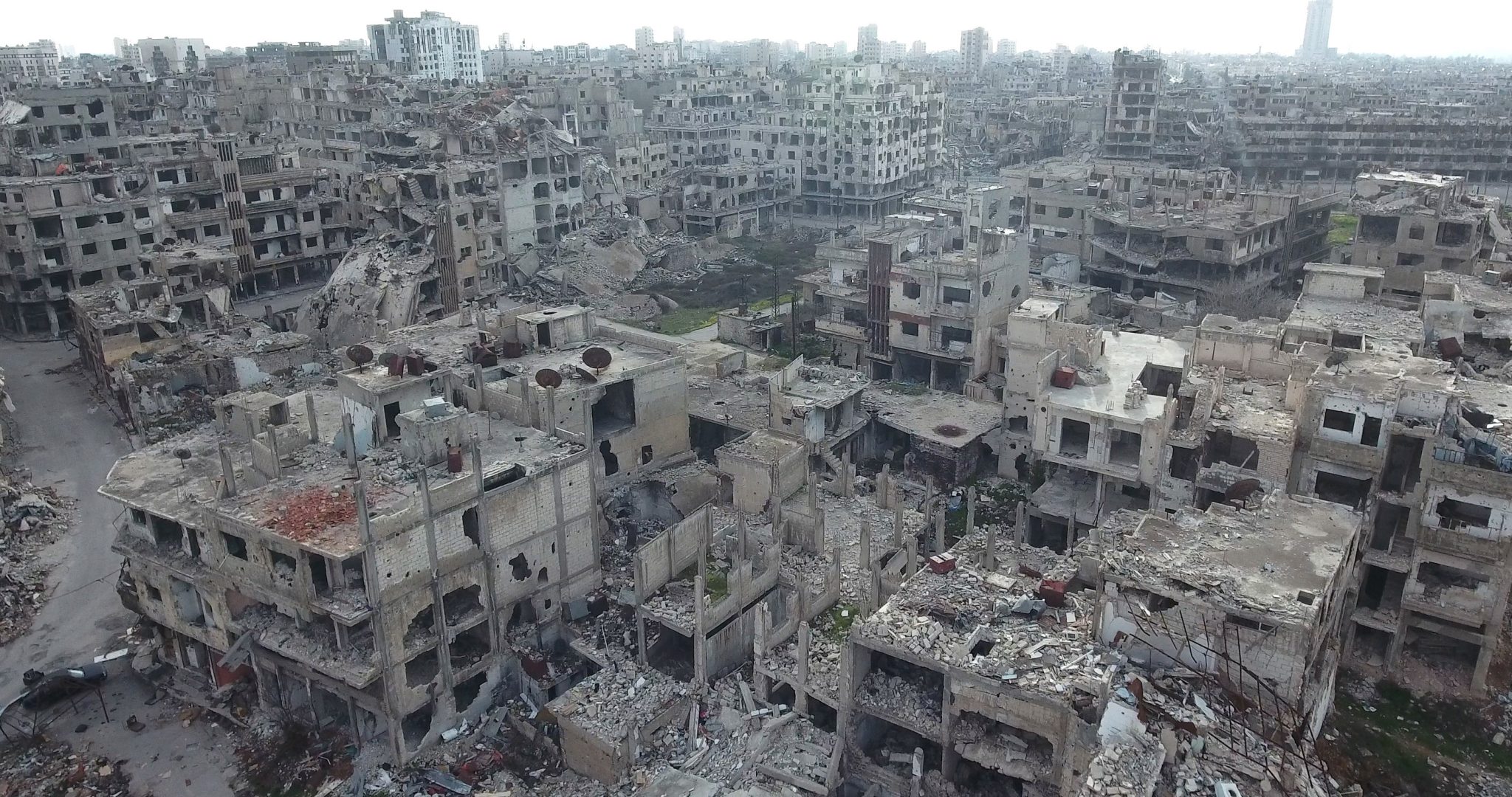
Syrian architect Marwa Al-Sabouni on architecture’s role in preserving peace
Syrian architect Marwa Al-Sabouni on architecture’s role in preserving peace
Share
As bombs rained down on architect Marwa Al-Sabouni’s home city of Homs, Syria, she made the difficult decision of staying in the city throughout the civil war. ADR chats to Al-Sabouni about how she believes the architecture in Homs helped facilitate conflict and the role architecture can now play in creating peace and identity.
When the Syrian civil war broke in 2011, Homs, the city where Al-Sabouni was born and grew up, saw some of the most ferocious fighting. Sixty percent of buildings were destroyed, leaving a sea of rubble. But despite this unthinkable danger, the architect chose to stay with her husband and two children as the war raged around them.
“Some people had their homes collapsing over them and in that way we weren’t forced to leave our place, as our roof was still standing,” explains Al-Sabouni.
“On the other hand, we were cornered and surrounded by life-threatening danger and events like shelling dropping all around and snipers at every corner. [There were] even daily challenges like constant power cuts and shortages of everything that you can imagine.
“[The decision to stay] was very challenging, but for us the question was, ‘what is the alternative? Is it to flee from one risk to another and live in a tent? Or do we just go and live at the expense of others?’ There were so many difficult choices. I find this choice a bitter one, but it’s the least bitter of the others.”
Sabouni is in Australia to talk at the Antidote Festival in Sydney, where she will discuss the role of architecture in identity. It’s a topic she believes in fiercely, having penned the memoir The Battle for Home, in which she suggests that architecture played a crucial role in the slow unravelling of Syrian cities’ social fabric.
“At university, right before the war I remember that the seniors who were graduating before us were aiming to emigrate to the Gulf and Saudi Arabia to work there because there was no proper work for architects in Syria,” she says.

The destroyed city of Homs
“That’s because the building industry in Syria at the time didn’t involve architecture in the aesthetic sense of the word; building was mainly done by civil engineers who just build buildings and don’t design architecture.”
In the past Syria’s architecture was reflective of its people; churches and mosques stood side-by-side and people from different religions lived harmoniously together.
But, over the years, the town planning replaced courtyard houses with concrete towers and cut off neighbourhoods into demographic ghettos. The errors were compounded by corrupt officials. This breakdown in social cohesion, Al-Sabouni believes, created conditions for armed conflict.
“In short it failed to create ‘home’ for people, to create a pleasant place, a town and city for people to settle in and to find a place to live and call home,” says Al-Sabouni who, along with her husband, used to run an architecture practice out of the old main square. It has since been destroyed.
“That is the main responsibility of architecture in my point of view; it’s to create places that relate to people and contribute to their living. Whether it’s their economic living or the social fabric that guides them together or just simply a place that you want to go to and live in.
“This was sabotaged and vandalised before the war. The conflict of course had many reasons, but one of the major reasons was how the city cornered people in a way that they were just ready to revolt.”
Homs is no longer at war. A ceasefire has been in place since late 2015 and it’s now that Al-Sabouni is raising awareness about the possibilities that can emerge from rebuilding her home city. However, the vast majority of destroyed buildings and infrastructure remain at the same stage, despite it being three years since rebels moved out of the city.
“Aside from removing rubble from the streets and patching the infrastructure for the remaining buildings, there has been no other work been done,” says Al-Sabouni.
What would she envisage for a rebuilt Homs, considering the two common models of Middle Eastern architecture: the ritzy-ness of the UAE and the homogeneous Islamic-style blocks topped with domes seen across other countries in the region?
“Exactly the opposite,” laughs Al-Sabouni. “Dubai is the embodiment of what not to do while you are seeking to build a place that relates to its people.
“To design architecture that resembles the people you also can’t just cut and paste elements from the past. It’s a multilayer process of reinventing architecture in a way that kept its relationship with the past, but is relevant to its present.
“It’s a challenge for all modern architecture, not just a challenge for the architecture in Syria, because modern architecture is dominated by the building industry.
“The building industry is, of course, a globalised industry where a sense of place is absent, local materials are absent and the study of local neighbourhoods, towns and cities is absent from mass production. So it’s a challenge not only for our region, but the whole international landscape.”
Al-Sabouni will speak at Antidote in Sydney on 2 September.
















